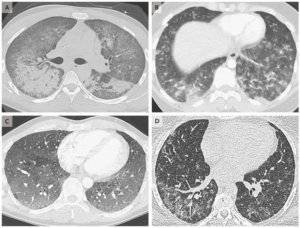By: Ashley Robinson

What is vaping? According to the Center on Addiction, “vaping is the act of inhaling and exhaling the aerosol, often referred to as vapor, which is produced by an e-cigarette or similar device.” Vaping is different from smoking in that e-cigarettes do not produce tobacco smoke; they produce an aerosol that consists of fine particles. E-cigarettes were introduced to the mass market in the United States in 2007 and variations of these e-cigarettes have been developed including vape pens and advanced personal vaporizers (MODS).
These various vaping devices generally work in the same way, with a battery that heats up the heating component which then turns the contents of the e-liquid into an aerosol that is inhaled into the lungs and then exhaled. The e-liquid originally contained propylene glycol or vegetable glycerin-based liquid with nicotine, flavoring and other chemicals, and metals. These devices do not contain tobacco.
The device that has been the current topic in many recent news stories is the JUUL. The JUUL is a vaping device that resembles a USB computer flash drive. This device has become increasingly popular with middle and high school students due in part to the variety of flavored e-liquid as well as the easy to hide design.
The original JUUL pods, the component that contains the e-liquid, contained nicotine. Recently, it has been discovered that people are creating THC -laced liquid to be used for vaping. There is a growing black-market for vaping products that is slowly being uncovered with drug busts, such as the one this month in Wisconsin. The police entered a house in a quiet suburban subdivision where they found slim boxes of flavored vaping cartridges. Next to these full cartridges, they found about 98,000 more empty cartridges with 57 mason jars nearby with THC-laced liquid to be used for vaping. These black-market JUUL accessories are popping up all around the country and serving customers their products online, in the streets, in pop-up stores, and even individual transactions that have been arranged through social media. All generations of buyers seem to overlook an important question, where did this accessory come from. They are not concerned with the source of their accessories, but they should be.
These contaminated THC-based vape cartridges are sold out of what are called “pen factories.” These factories buy empty vape cartridges and counterfeit packaging, and then fill them up with contaminated THC-based liquid and sell them. These cartridges may not necessarily be a health risk but for the practice of “cutting the product,” which is what occurs in other illegal drug operations to increase profit margins. The public health authorities have identified some cutting agents that may be the cause of the lung illnesses that have recently occurred. Vitamin E acetate, if not heated completely, can cause breathing problems and lung inflammation. Unfortunately, some people may not even realize that they are purchasing “contaminated” cartridges. These cartridges can come prepackaged in packaging that mimics legal vaping products. In states where THC is legal, these products end up on the market and can be sold under the guise of being legal and safe.
There have been close to 500 cases of lung illness and six deaths that have been linked to vaping so far. These numbers are staggering and due to this there is a large push to ban vapes, or at least ban flavored e-liquid. Many people believe that banning the flavored e-liquid would discourage minors from using these products. In early September, the Trump administration stated that it was going to ban the sale of most flavored e-cigarettes. The Food and Drug Administration (FDA) is working to outline a plan in the next few weeks to remove these flavored e-cigarettes and nicotine pods from the market. Some states have taken it upon themselves to ban the sale of flavored e-cigarettes. Although it seems like the number of teens using these products has actually increased recently, the FDA, the CDC, and the Trump administration are moving forward with bans and programs that are aimed at helping to decrease the number of people, especially teens, using e-cigarettes.
Citations:
1. Linda Richter, What is Vaping?, CENTER ON ADDICTION (Oct. 2018), https://www.centeronaddiction.org/e-cigarettes/recreational-vaping/what-vaping.
2. Julie Bosman and Matt Richtel, Vaping Bad: Were 2 Wisconsin Brothers the Walter Whites of THC Oils?, THE NEW YORK TIMES (Sept. 17, 2019), https://www.nytimes.com/2019/09/15/health/vaping-thc-wisconsin.html.
3. Matt Richtel and Denise Grady, Cases of Vaping-Related Lung Surge, Health Officials Say, THE NEW YORK TIMES (Sept. 11, 2019), https://www.nytimes.com/2019/09/06/health/third-death-vaping-related-disease.html?action=click&module=RelatedLinks&pgtype=Article.
4. Sheila Kaplan, Trump Administration Plans to Ban Flavored E-Cigarettes, THE NEW YORK TIMES (Sept. 11, 2019) https://www.nytimes.com/2019/09/11/health/trump-vaping.html?module=inline.
